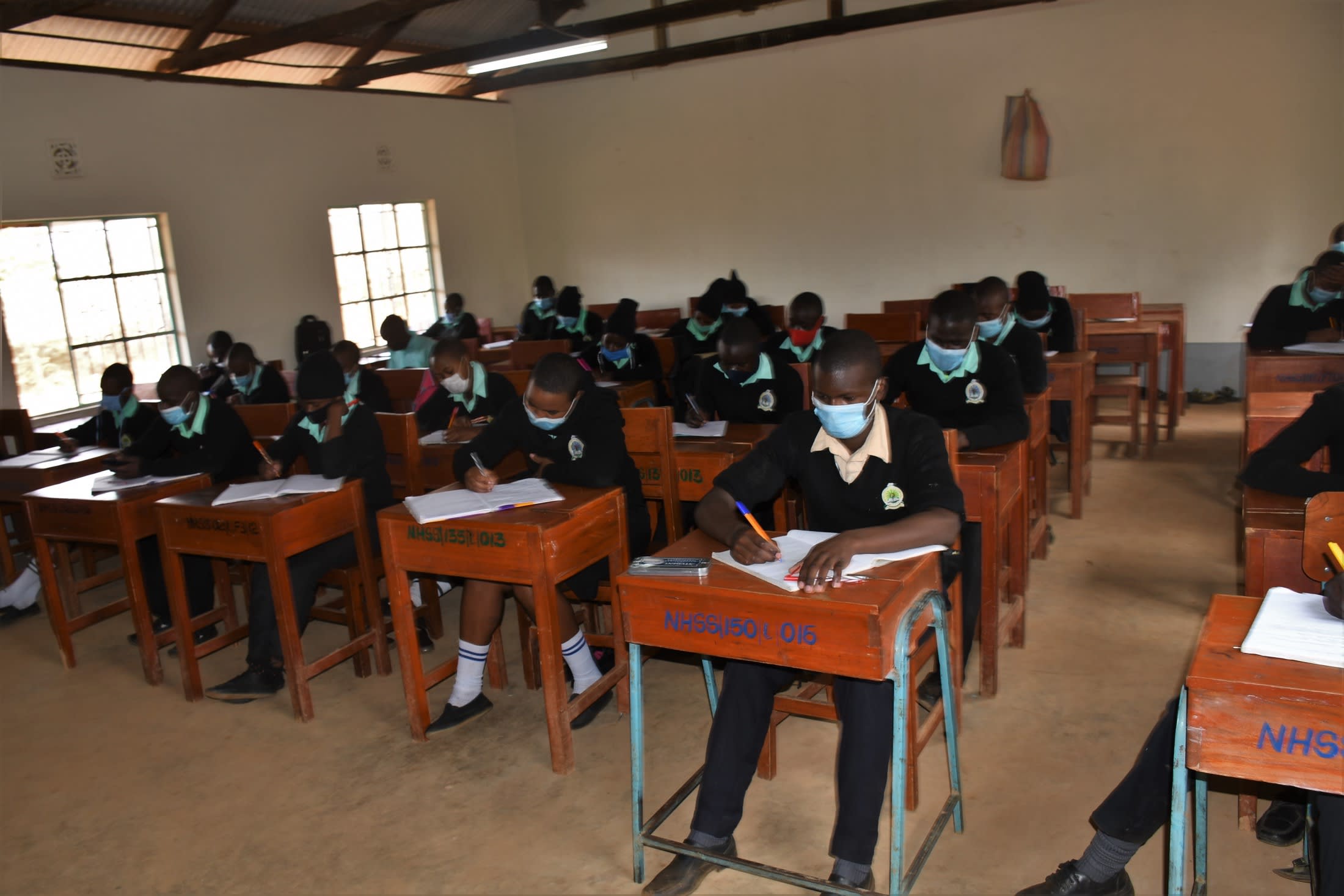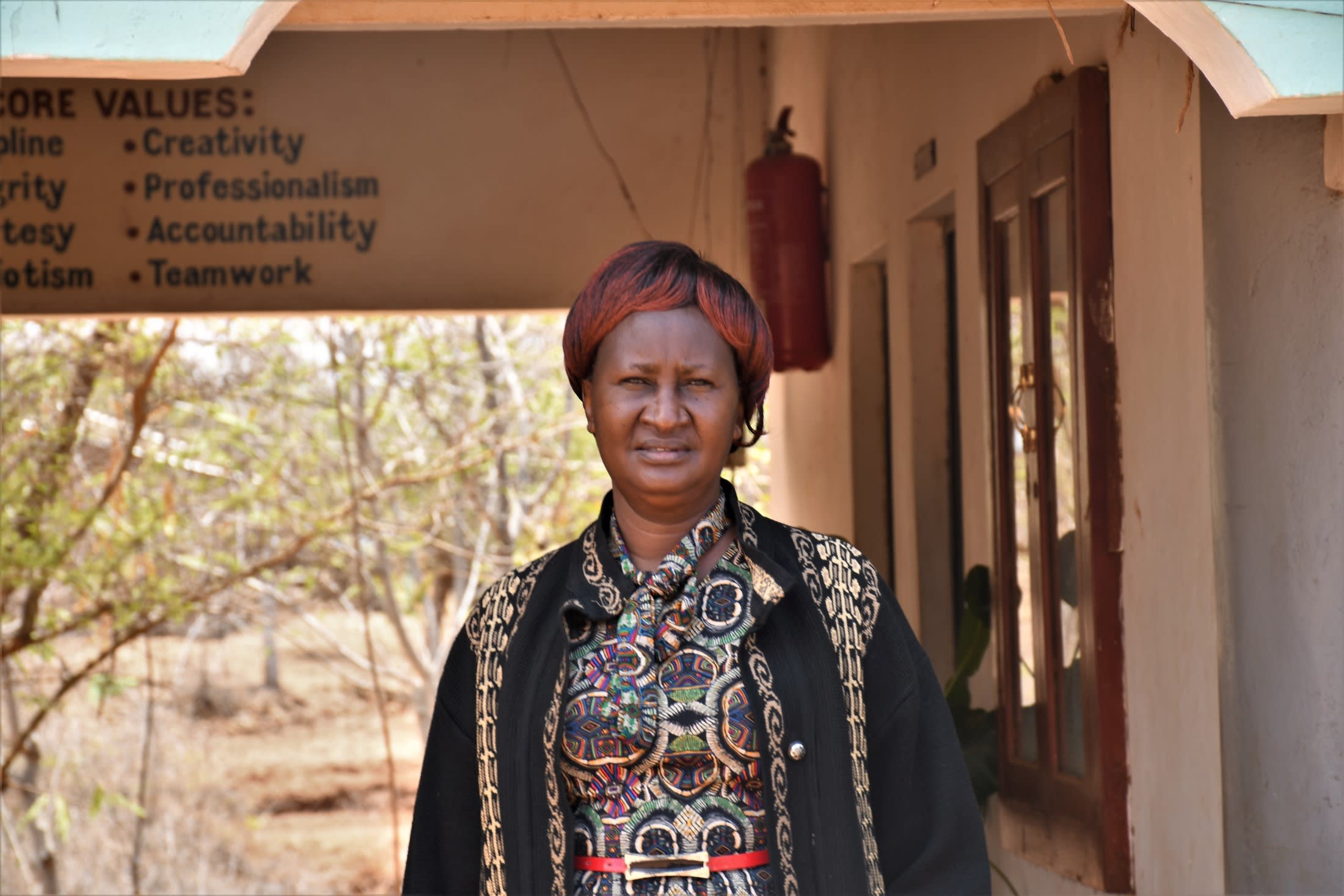The 168 students and staff at Ngunni Hill Secondary School face water scarcity and its challenges daily. Their current water sources are a borehole well shared with the community and rainwater tanks with a 20,000-liter capacity. When the tanks are empty, children walk to the well but often, especially in the dry season, there is no water to collect because it has run dry from overuse and a low water table.

Sadly, even the water they do manage to collect from the borehole is salty and unfit for drinking. The students have complained of stomach upsets and water-related illnesses such as typhoid and amoebas, leading to absenteeism and ultimately poor academic performance.
When the water from the community well runs out, administrators must purchase water from vendors. The administration has spent up to KSh 100,000 ($850USD) a term to ensure students and staff have access to water, but this is not an expense they can afford to maintain.
Wycliffe M., an 18-year-old student, commented, "Getting water to drink after meals is difficult due to [the] insufficient water supply. During the hot and dry months, it gets very hot and I become very thirsty. I often strain to understand the lessons offered in the afternoon."
As shared by Wycliffe, even this additional water is not sufficient to meet the school's demands for drinking, cooking, and cleaning. During the dry periods, any water collected is rationed and students have to drink a limited amount of water as a result. Meals are often delayed, which impairs the students' concentration level in class and the time spent in search of water negatively impacts the learning process.

Pamela Kiloo, 58, Head Teacher, said, "The school's academic performance is impaired because of the delayed meals and lack of water to drink, due to the acute water shortage. The little available water has to be used sparingly and this leads to poor levels of hygiene and sanitation. The available water is also contaminated, which contributes to water-related infections culminating in school absenteeism. Some subjects, such as Agriculture, have a dismal performance as there is no water to support the crop plantation needed for the projects."
The school's intended farm to provide nutrition for the students and the campus's landscaping also suffers without water. The trees have wilted, succumbing to drought, leaving no shade.
The proposed 104,000-liter rain tank will greatly expand the capacity of storing clean water for drinking and cooking during the rainy season to sustain the school during the long dry months. The water expenses will reduce, and there should be adequate water to grow trees and crops for the school's farm.
Rain Tank
We will build a 104,000-liter rain tank for this school, making the others look tiny in comparison. Because of how rarely it rains in Southeastern Kenya, this tank's large volume is designed to store as much water as possible during the seasonal rains, making more water available through the dry months. This water will benefit the students, teachers, and supplementary staff.
Parents will mobilize the materials needed for construction, including sand, stones, and water. They will also lend their strength and time to help with the construction. We will complement their materials with a skilled artisan to lead the project in addition to providing the tools, lumber, metal, cement, and gutter system.
As soon as the tank has time to cure, it can begin collecting rainwater for the school's use.
Training
We will train students and staff on sanitation, hygiene, and other topics for 1 day. Those in attendance will form a school health club that will promote good hygiene and sanitation practices both at school and at home. They will learn all of the steps to proper handwashing, how to treat water, and how to keep their environment clean. The school will also be taught how to best oversee and maintain their new rain tank and handwashing stations.
Handwashing Stations
A total of 3 handwashing stations will be installed upon the project's completion and before training. These are 1,000-liter plastic tanks fitted with 3 taps each, allowing 9 students to wash their hands at once. The student health club and school management will be responsible for making sure the tanks are filled with water and that a cleaning agent such as soap or ash is always available.

 Rainwater Catchment
Rainwater Catchment
 Rehabilitation Project
Rehabilitation Project
































